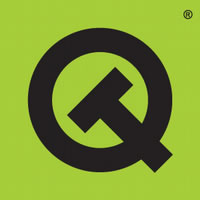 Trolltech may not be well known, but they make a software product called Qt (pronounced “cutie”) which is used by many. It’s a package that allows developers to write code that works across several platforms (Windows, Linux and MacOS X) so only one set of API’s (Applications Programming Interfaces) need to be learnt.
Trolltech may not be well known, but they make a software product called Qt (pronounced “cutie”) which is used by many. It’s a package that allows developers to write code that works across several platforms (Windows, Linux and MacOS X) so only one set of API’s (Applications Programming Interfaces) need to be learnt.
Qt is used both commercially and in the open source community (it’s the basis for the Linux KDE windowing environment). Commercially there are several well known programs using it, including Skype and various packages from Google and Adobe.
Qt has been around for quite a while and more recently introduced Qtopia a complete Linux development environment, using Qt as a basis for its user interface.
Qtopia comes in several editions including a phone edition which is used by several vendors including Motorola. It uses Embedded Linux (version 2.4) and then Qtopia sits on top, offering various standard interfaces (including the user interface and standard Qtopia applications like calendaring, contacts, etc).
Qt and Qtopia are designed to make writing applications easy, however it’s still a relatively complicated task. Supporting lots of flavours of hardware further complicates things.
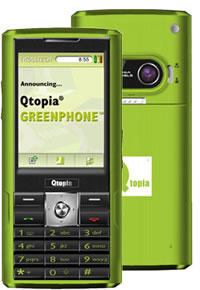 Trolltech Greenphone
Trolltech Greenphone
In addition to Qt and Qtopia, Trolltech have come out with a mobile development device, known as the Greephone. Unsuprisingly it has a green casing, just so you don’t forget. The phone only supports GSM/GPRS.
The Greenphone comes with Qtopia Phone Edition 4.1.4 and the Linux kernel 2.4.19.
The hardware consists of a touch-screen and keypad UI QVGA LCD colour screen, Intel XScale 312 MHz PXA270, 64MB RAM & 128MB Flash, Mini-SD card slot, Broadcom BCM2121 GSM/GPRS baseband processor, Bluetooth and Mini-USB port.
Though it’s not designed to be used in production, it is designed to allow developers to rapidly prototype applications that can then be moved on to a real phone before expensive prototypes are made.
 Applications, new kernels and versions of Qt and Qtopia can be loaded on to the Greenphone through the mini USB connection.
Applications, new kernels and versions of Qt and Qtopia can be loaded on to the Greenphone through the mini USB connection.
The Greenphone comes with a complete Qtopia SDK (software development kit) which provides a complete environment for developing and modifying application software for Qtopia Phone Edition. It can produce packages that run on the Greenphone itself or run through the virtual phone included with the SDK.
There are already over 4 million Linux phones utilising Trolltech’s software, this just allows manufacturers to develop Linux applications and get them to market more rapidly.
The mobile phone market is already a crowded space with Microsoft Windows Mobile 5.0 and Symbian dominating the market. Maybe this will give Linux the mobile boost it needs to push it into the mainstream.
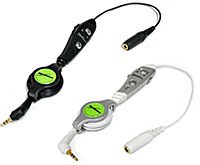 If you’re fed up with having to use the rubbish headphones that came with your Treo, you may want to consider investing in BoxWave’s Dual Handsfree Stereo Adapter.
If you’re fed up with having to use the rubbish headphones that came with your Treo, you may want to consider investing in BoxWave’s Dual Handsfree Stereo Adapter.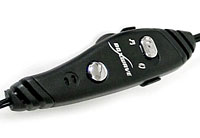 The unit features a simple (gold plated) 2.5mm to 3.5mm adapter which connects up to a small control unit which includes an integrated microphone, single-touch answer call button, volume control, and a switch for toggling between music and handsfree phone mode.
The unit features a simple (gold plated) 2.5mm to 3.5mm adapter which connects up to a small control unit which includes an integrated microphone, single-touch answer call button, volume control, and a switch for toggling between music and handsfree phone mode.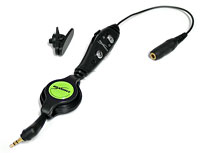 Giving it a bit of welly with some MP3s played back on
Giving it a bit of welly with some MP3s played back on 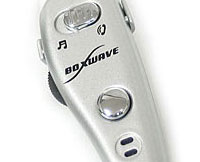 Overall, we found the BoxWave to be well worth the outlay (currently on offer from their site at $20.95) and a great investment if you want to be able to get the best music performance out of your Palm Treo 650/700p/700w.
Overall, we found the BoxWave to be well worth the outlay (currently on offer from their site at $20.95) and a great investment if you want to be able to get the best music performance out of your Palm Treo 650/700p/700w.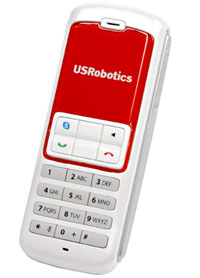 USRobotics has rolled out two new Skype Certified handsets, the oh-so-catchily named USR9601 USB Internet Phone and the seductively monikered USR9602 USB Internet Mini Phone.
USRobotics has rolled out two new Skype Certified handsets, the oh-so-catchily named USR9601 USB Internet Phone and the seductively monikered USR9602 USB Internet Mini Phone.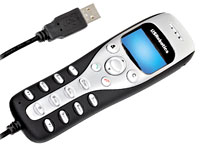 “USRobotics and Skype are committed to enabling the world’s conversations; these new USB Internet phones are a great example of our shared vision,” Brenes added, while we pondered over how one gets a job as an “enabler of world conversations.”
“USRobotics and Skype are committed to enabling the world’s conversations; these new USB Internet phones are a great example of our shared vision,” Brenes added, while we pondered over how one gets a job as an “enabler of world conversations.” Yet more proof that Koreans are spoilt rotten when it comes to having the very latest must-have mobile gadgets comes in the form of Samsung’s brand new phone – displayed, as ever, by scantily clad models.
Yet more proof that Koreans are spoilt rotten when it comes to having the very latest must-have mobile gadgets comes in the form of Samsung’s brand new phone – displayed, as ever, by scantily clad models.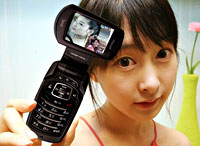 The chunky black clamshell phone also lets users switch between having a small Picture in Picture (PiP) display showing the secondary channel or splitting the display in half, with the two selected channels sharing the total viewing area.
The chunky black clamshell phone also lets users switch between having a small Picture in Picture (PiP) display showing the secondary channel or splitting the display in half, with the two selected channels sharing the total viewing area.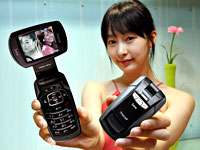 Naturally, users can also elect to fill the screen with just the one channel for fuddy-duddy, old-school types who are satisfied with just one channel playing simultaneously.
Naturally, users can also elect to fill the screen with just the one channel for fuddy-duddy, old-school types who are satisfied with just one channel playing simultaneously.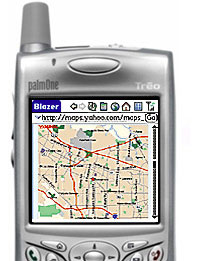 With more Internet-enabled handsets on the market, it’s not surprising that more punters are getting a bit of Web action on the move, with email and weather sites being the top two most visited mobile sites.
With more Internet-enabled handsets on the market, it’s not surprising that more punters are getting a bit of Web action on the move, with email and weather sites being the top two most visited mobile sites. Top US Mobile Websites (June 2006)
Top US Mobile Websites (June 2006)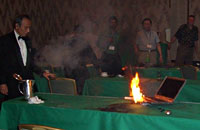 Dell has announced that it is to recall millions of laptop batteries over fears that they could overheat and pose a fire hazard.
Dell has announced that it is to recall millions of laptop batteries over fears that they could overheat and pose a fire hazard.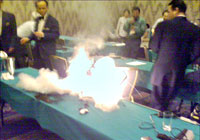 A battery of battery recalls
A battery of battery recalls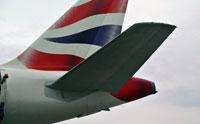 Gadget fans dreading the prospect of long Transatlantic flights without the comforting flicker of LCD screens or the in-ear thump of iPods will be pleased by a relaxing of the restrictions brought about by last week’s ‘critical’ terrorist security alert.
Gadget fans dreading the prospect of long Transatlantic flights without the comforting flicker of LCD screens or the in-ear thump of iPods will be pleased by a relaxing of the restrictions brought about by last week’s ‘critical’ terrorist security alert. Cabin baggage must not exceed a maximum length of 45cm, width of 35cm and depth of 16cm (17.7″ × 13.7″ × 6.2″ approximately), including wheels, handles and side pockets. This is smaller than the previous limits on hand luggage.
Cabin baggage must not exceed a maximum length of 45cm, width of 35cm and depth of 16cm (17.7″ × 13.7″ × 6.2″ approximately), including wheels, handles and side pockets. This is smaller than the previous limits on hand luggage. Liquids not allowed include gels, pastes, lotions, liquid/solid mixtures and the contents of pressurised containers, for example toothpaste, hair gel, drinks, soups, syrups, perfume, deodorant, shaving foam and aerosols. No cosmetics, toiletries or sharp objects.
Liquids not allowed include gels, pastes, lotions, liquid/solid mixtures and the contents of pressurised containers, for example toothpaste, hair gel, drinks, soups, syrups, perfume, deodorant, shaving foam and aerosols. No cosmetics, toiletries or sharp objects. Following the long tradition of Web innovations often premiering in the
Following the long tradition of Web innovations often premiering in the 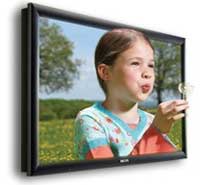 Introduced earlier this year, the 3D displays have been used for professional applications, but the Holland Casino will be the first company in the leisure and entertainment world in Europe to use these 3D displays for the general public.
Introduced earlier this year, the 3D displays have been used for professional applications, but the Holland Casino will be the first company in the leisure and entertainment world in Europe to use these 3D displays for the general public.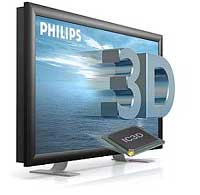 The Holland Casino plans to integrate the 3D screens in a new national jackpot concept, the Mega Million Jackpot, with the technology being introduced in the Autumn.
The Holland Casino plans to integrate the 3D screens in a new national jackpot concept, the Mega Million Jackpot, with the technology being introduced in the Autumn.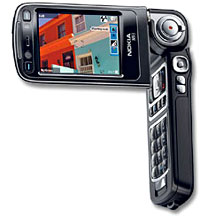 Hollywood hot shot Gary Oldman is today releasing his new short film, shot on the Nokia N93 we’re told.
Hollywood hot shot Gary Oldman is today releasing his new short film, shot on the Nokia N93 we’re told.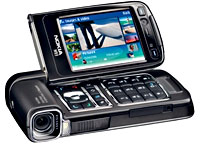 Happy Slapping
Happy Slapping